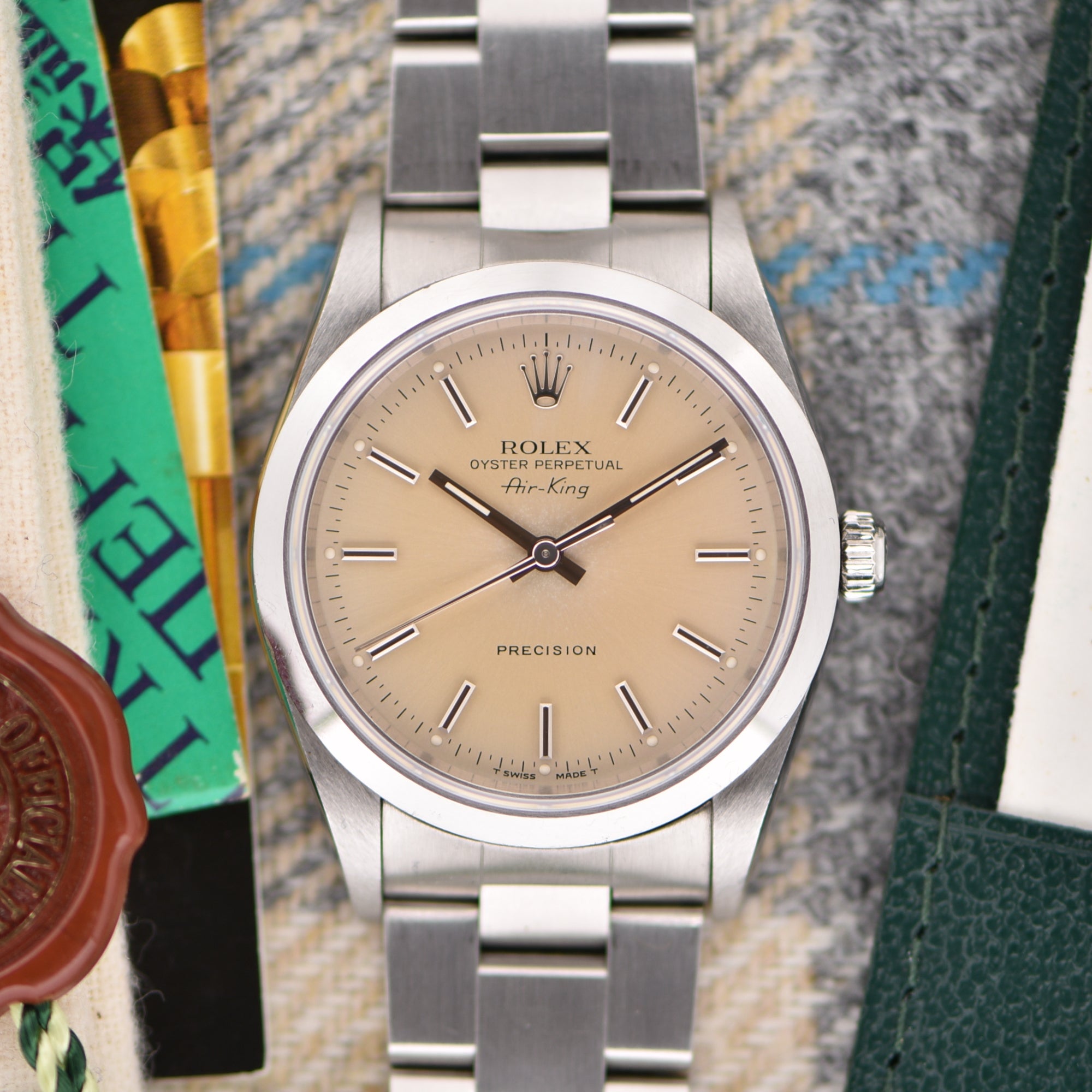
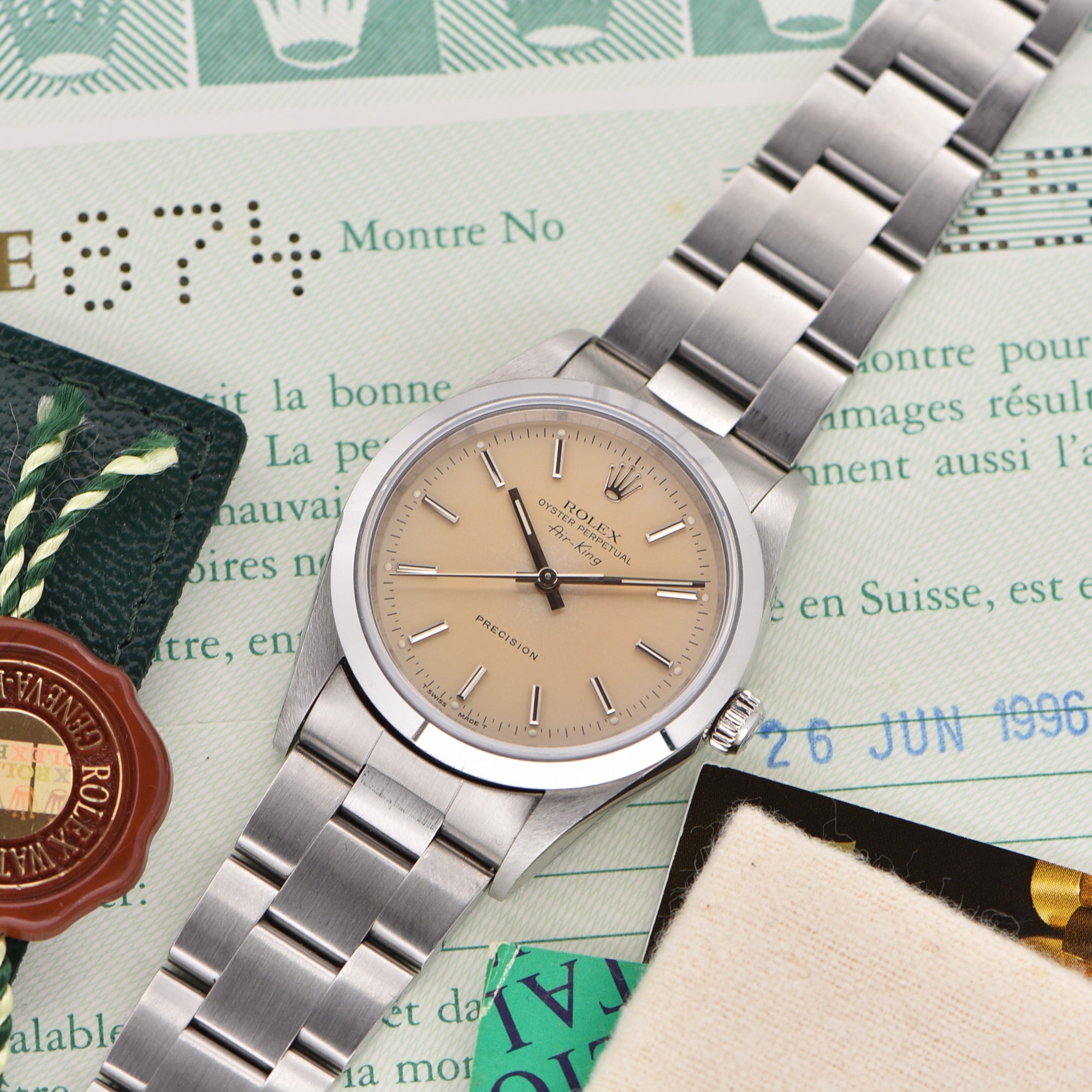
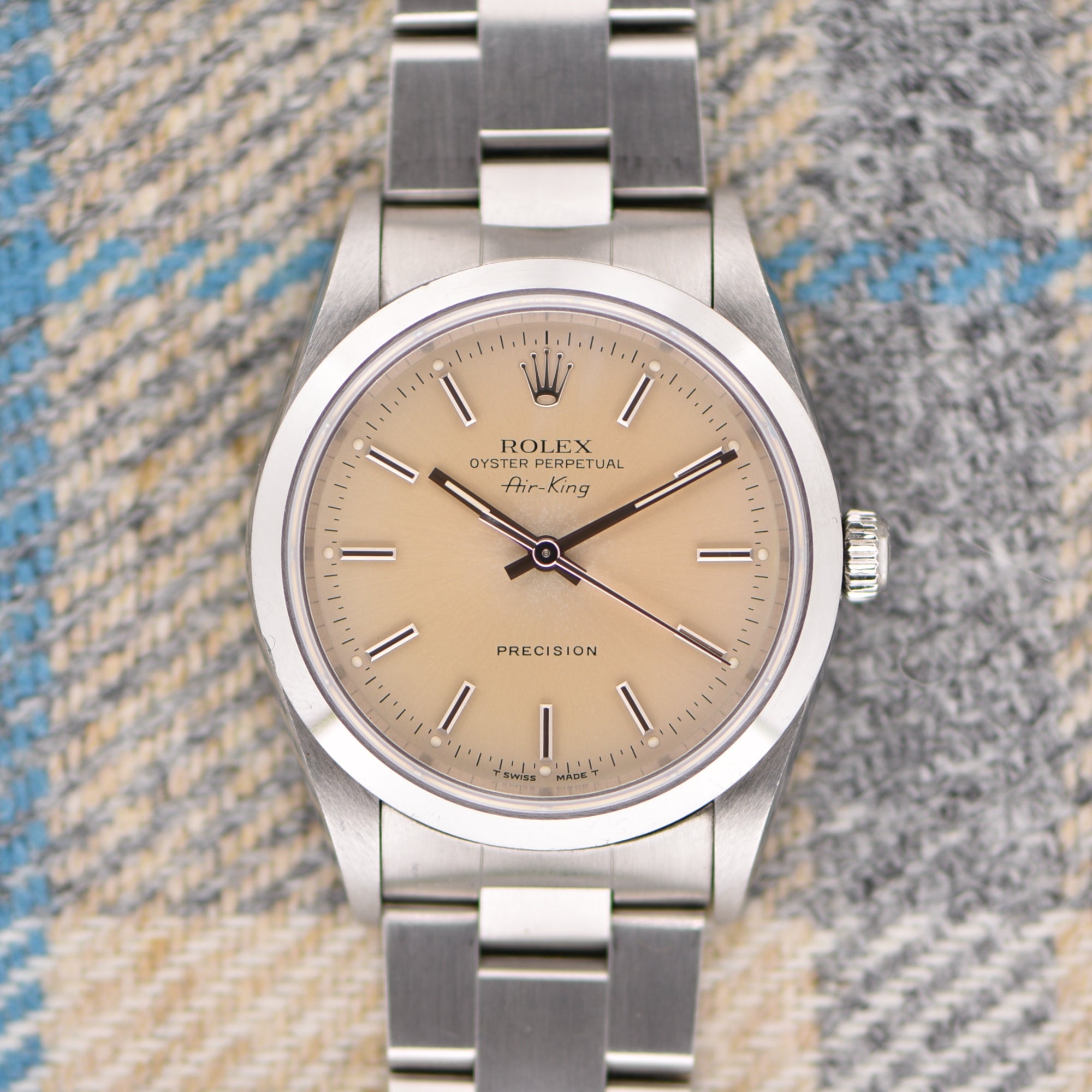

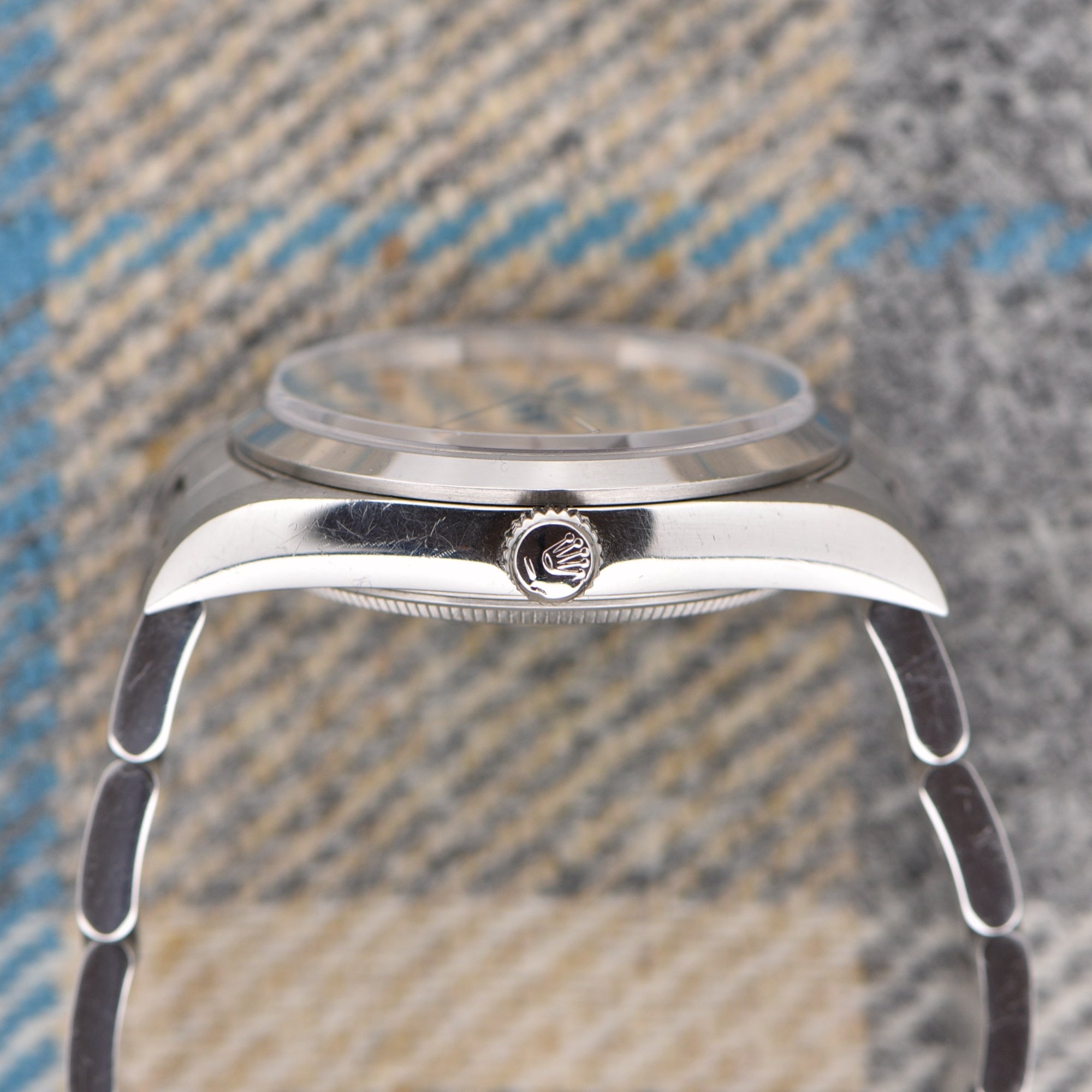
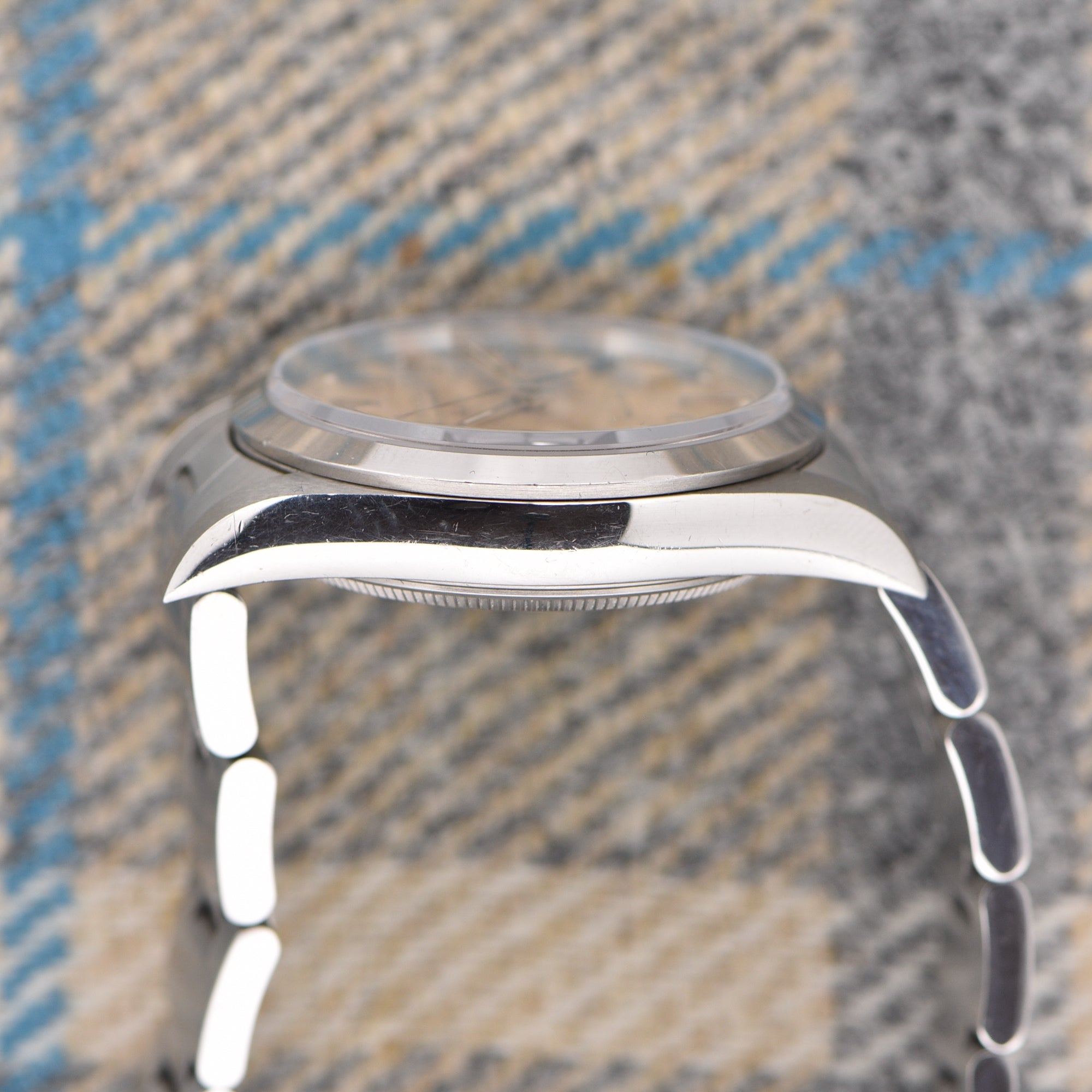
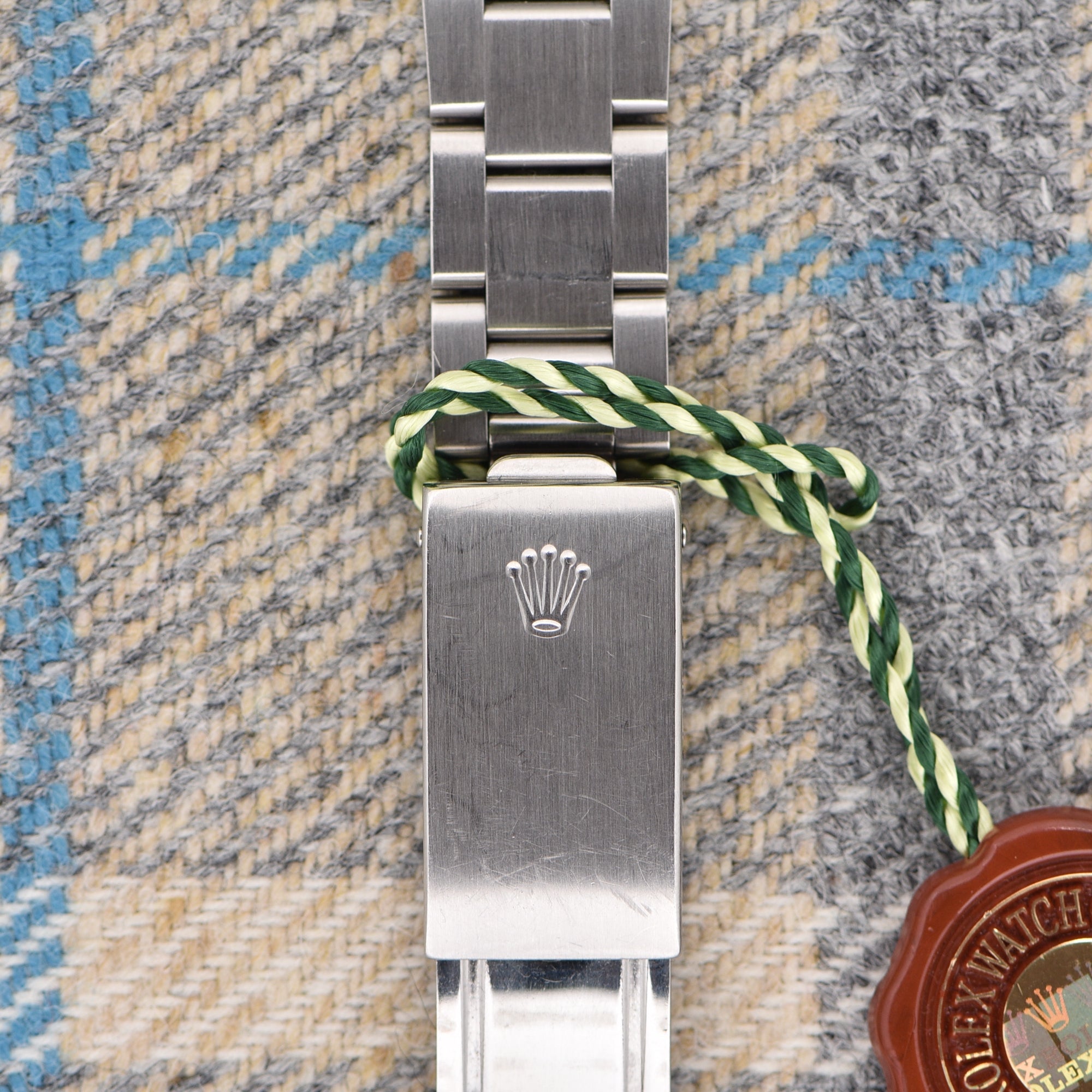

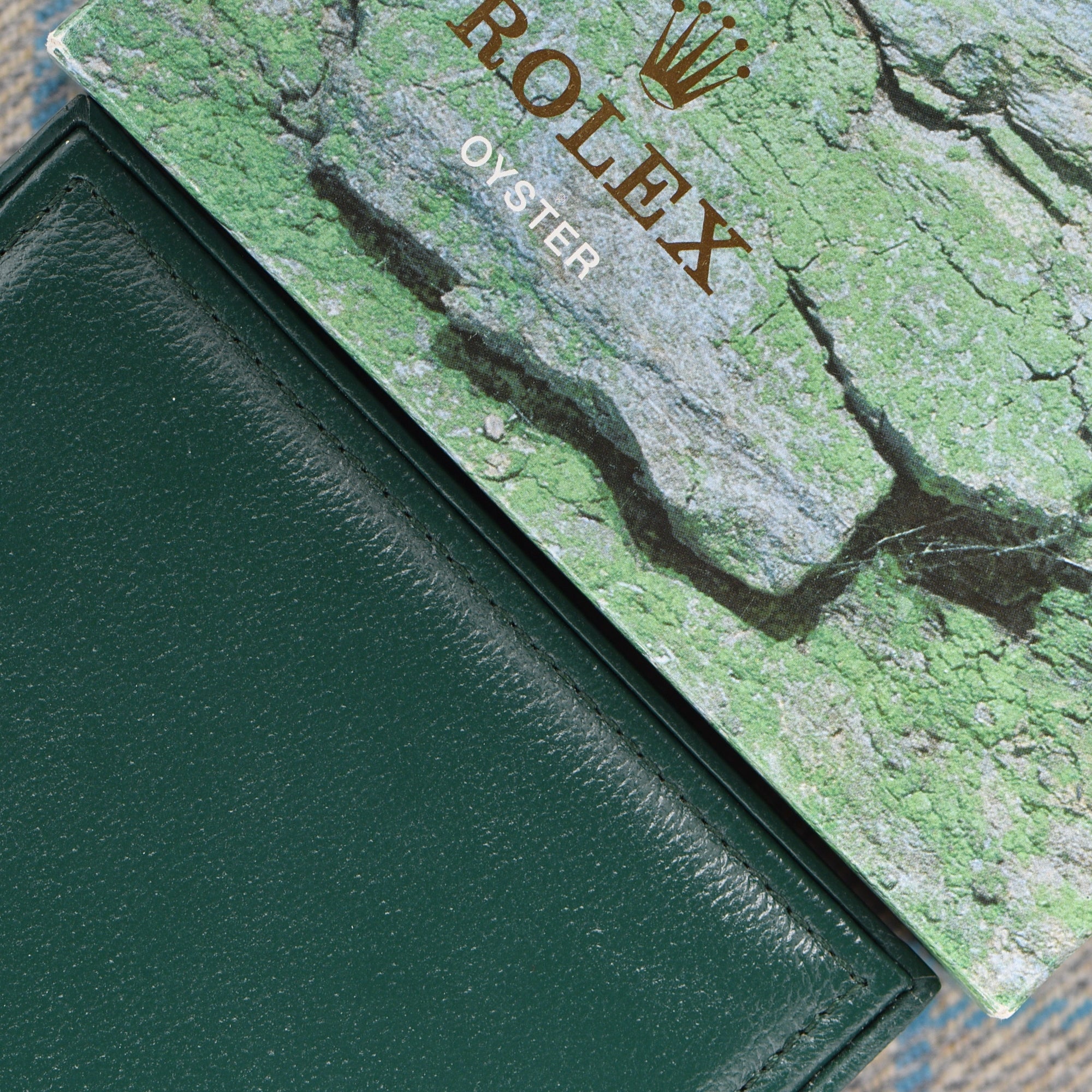
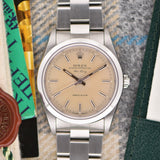


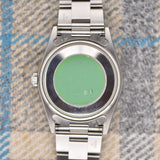
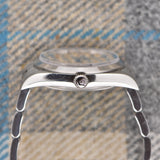
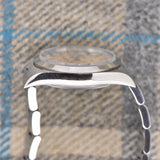

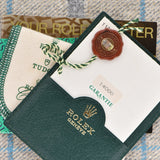
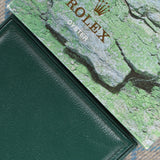
1996 Rolex Air King Warm Patina - Box & Papers
- Reference 14000
- Boxes, Papers, booklets, Tag
- Specifications
- The Story
- The Brand
Year: 1996
Model: 14000
Case Diameter: 34mm
Lug to Lug: 41mm
Case: Stainless steel
Dial: Silver
Movement: Automatic
Condition
This Airking looks to be an honest and unpolished example. The watch still has the original caseback sticker. The lugs are nice and sharp, and the bezel has a few markers with a small ding at 11 o'clock. Even with the wear seen on the case, the sharpness of it makes it look amazing. The silver dial has now turned a bit warmer with a beautiful, even patina. The watch also comes with its original box and papers.
Rolex produced several Air models during and after World War II, including the Air-King, which was released in 1945. The Air-King was part of a collection of Air watches that included the Air-Lion, Air-Tiger, and Air-Giant. The first Air-King was the Reference 4925, which is now a rare find. It featured a cream dial and even-numbered Arabic numerals. The Air-King began to acquire its own aesthetic with the transitional Reference 6652 in 1953, which featured the caliber 1030 ticking inside. This reference introduced the creamy silver dial and stick hour markers that became iconic in the subsequent Reference 5500.
The Air-King's reign was marked by variation over the 37-year reign, with the introduction of the Reference 5500 in 1957, the Air-King-Date in 1958, and the Reference 5504 case for some time. In 1989, Rolex introduced the Reference 14000, which provided an update to the Ref. 5500, featuring Arabic numerals at the 3-6-9 hours, with stick markers in between. The engine turned bezel was a popular alternative for consumers who didn't want the flashy fluted bezel seen on many Datejusts or the modern Sky-Dweller but were also bored by the smooth bezel of Air-King's years past.
In 2007, Rolex replaced the 14000 collection with Reference 114200, the same year they introduced Reference 114234, which had a similar dial design to the Ref. 11420 but added a white gold fluted bezel to make sure everyone noticed that they were indeed wearing a Rolex. All three references continued to utilize the caliber 3130, the same movement used in the Explorer Reference 114270 during the time period.
In 2016, Rolex introduced the new Air-King, Reference 116900, which features a 40mm Oystersteel case, the same case as the Milgauss Reference 116400. It also comes packed with the same caliber 3131 movement inside, including the same anti-magnetism features. The dial has been polarizing, with large 3-6-9 numerals separated by minute markings at the remaining intervals.
Over the years, a number of famous people have been spotted wearing an Air-King of various vintages. The Air-King's design and functionality have evolved over time, with the Air-King still being a popular choice among collectors.
Wilsdorf & Davis was initially a watch importer, but by 1908, Wilsdorf had registered 'Rolex' as a trademark. The name was chosen after trial and error, with some believing it was taken from the phrase 'horological Excellence' or because the word sounds like a watch being wound. Wilsdorf was aware of the power of branding and began a long campaign to get the new company name on the watches he exported. The relationship between Rolex and Aegler started the same year that Wilsdorf & Davis set up the business, placing the largest order for wristwatches ever seen. Wilsdorf was attracted by Aegler's commitment to the highest quality, as their movements were extremely accurate and small. In 1910, one of Rolex's models won a First Class Chronometer Certificate from the rating office in Bienne, Switzerland, and in 1914, another piece became the first ever wristwatch to be granted a Class A Chronometer Certificate from the Kew Observatory in England, the only non-marine timepiece to ever achieve it. The firm of Wilsdorf & Davis became synonymous with a commitment to uncompromising excellence.
WWI in 1914 led to the rebranding of Wilsdorf & Davis as Rolex in 1915. The British government imposed a 33.3% tax on luxury goods, forcing Rolex to relocate to Bienne. Despite the war, the wristwatch proved its utility, as it was used by soldiers during combat and in the field. Rolex produced trench watches, using Aegler's small movements for wearability. By the end of the war, wristwatches became a utilitarian accessory for men. In the years between the wars, Rolex asserted its independence, partnering with Carl F. Bucherer to resist the Federation of Swiss Watch Manufacturers. In 1926, Rolex introduced the Oyster case, making wristwatches waterproof, dustproof, and robust. Wilsdorf capitalized on this innovation by installing Rolex Ambassadors, or 'Testimonies', with celebrities as a marketing masterstroke.
During WWII, Switzerland retained its neutrality, meaning that it was one of the few countries not forced to shut down watch manufacturing to supply the war effort. As a result, by the end of hostilities, the Swiss watch industry was way ahead of other nations. Rolex truly came of age in the 1950s by launching some of the most enduring legends in watchmaking, such as the Explorer, Submariner, GMT-Master, Day-Date, and Milgauss.
The quartz crisis of the 1970s and 80s forced the company to change tactics but ultimately repositioned itself as the purveyor of the ultimate luxury lifestyle. Today, the name Rolex is synonymous with refinement, opulence, and personal accomplishment. The Rolex brand as we know it today is the byproduct of an unrelenting drive for excellence and over a hundred years of refinement and development, all in pursuit of the brand’s singular goal of making the world’s best wristwatch.
1996 Rolex Air King Warm Patina - Box & Papers
Authenticity Guaranteed
All our watches are carefully inspected to insure and guarantee the authenticity.
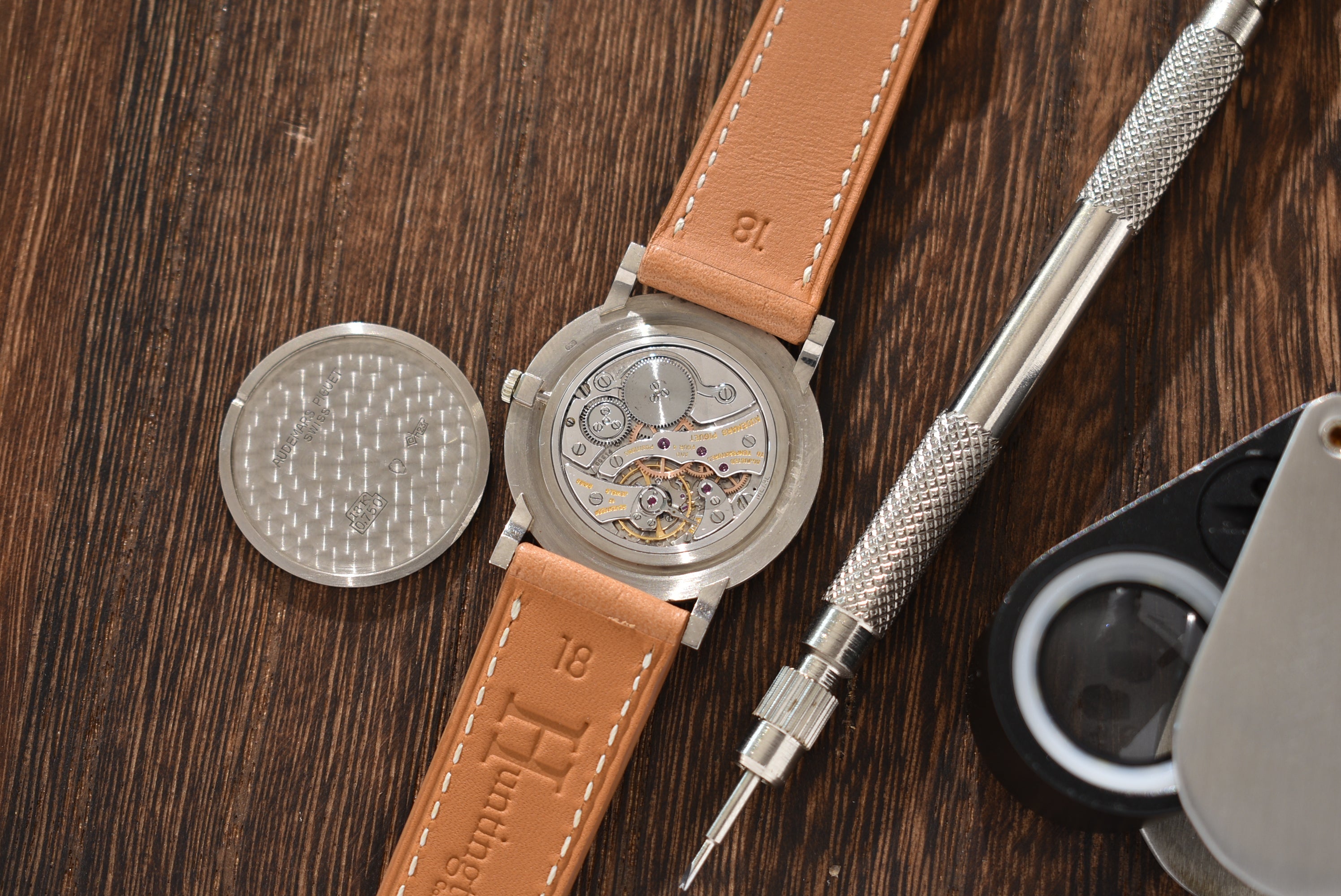
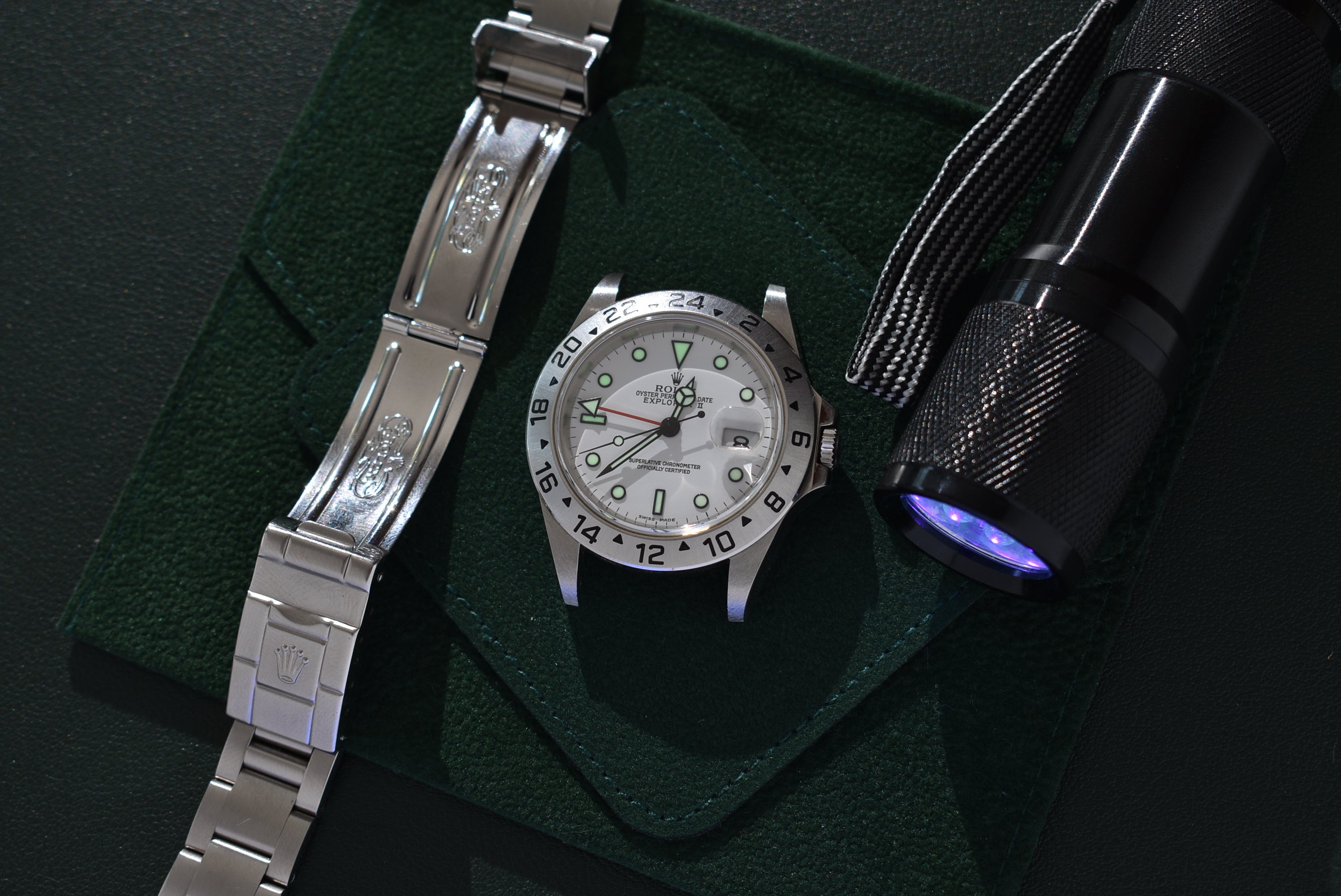
The Details
All our watches are scrutinized during inspection to make sure our descriptions are as accurate as possible.
- Related products
- Recently viewed
